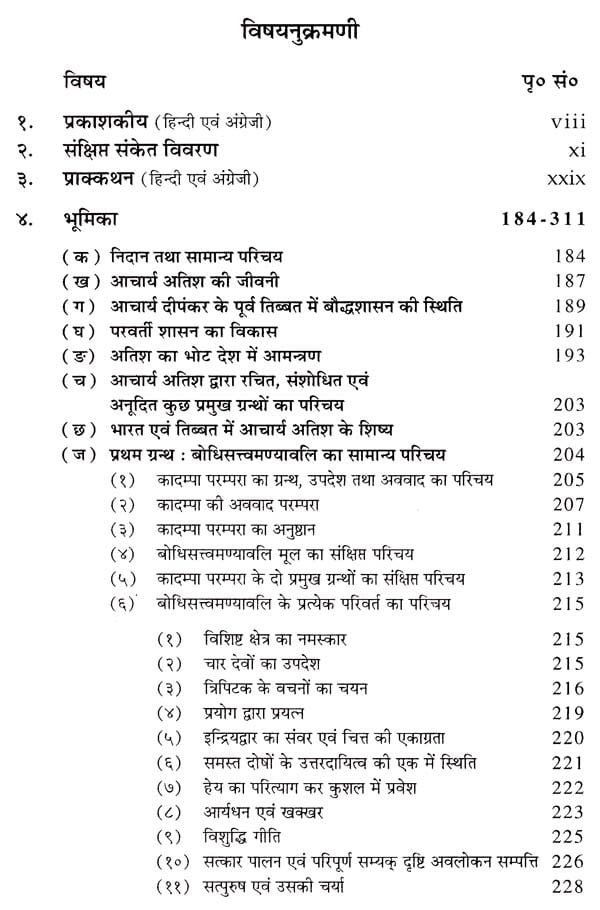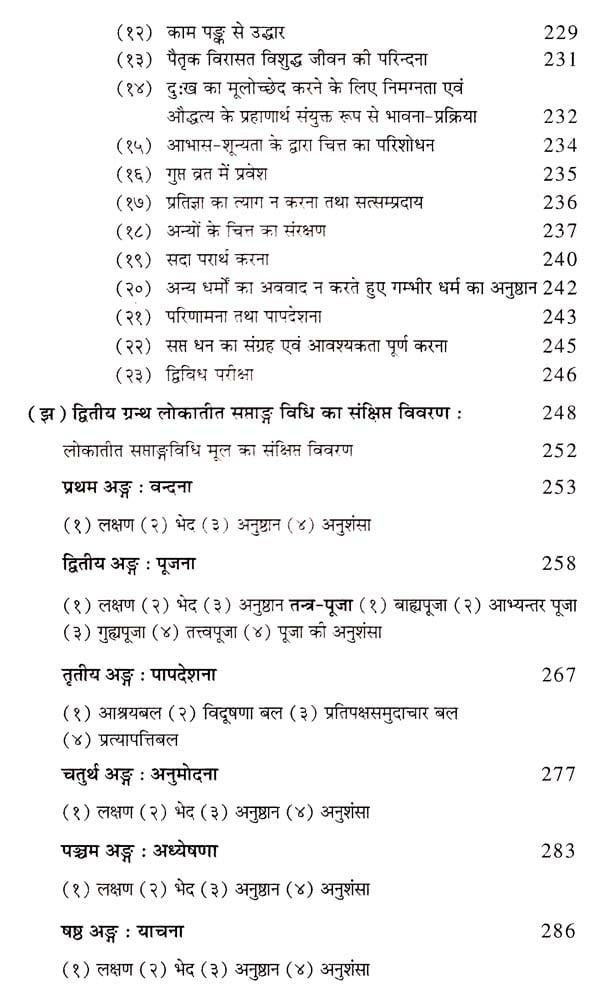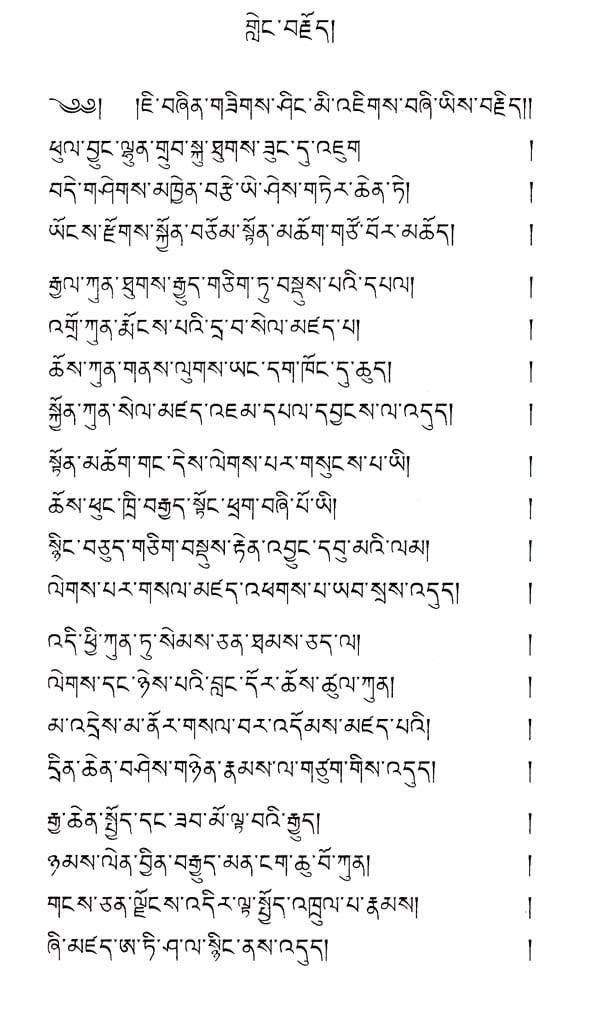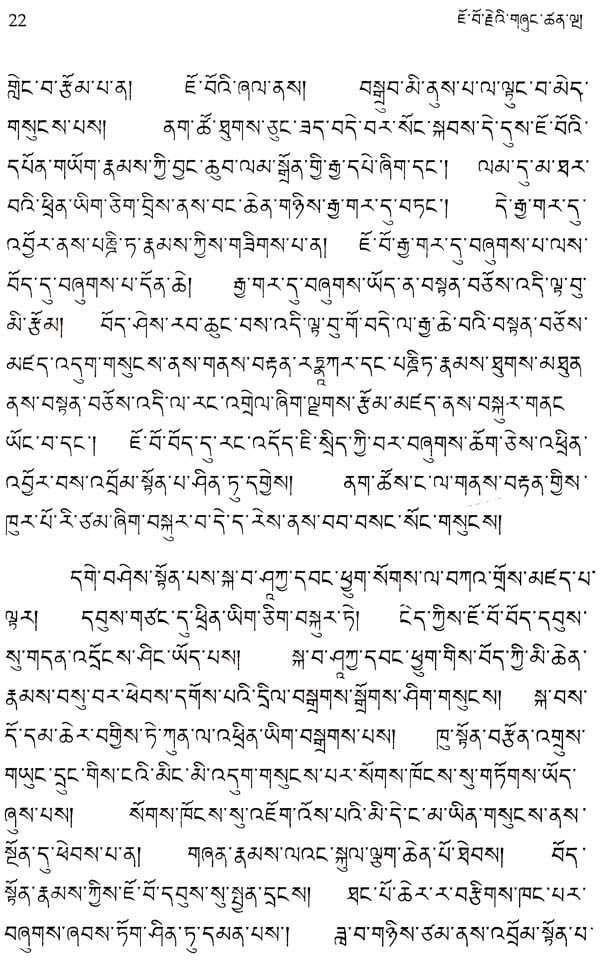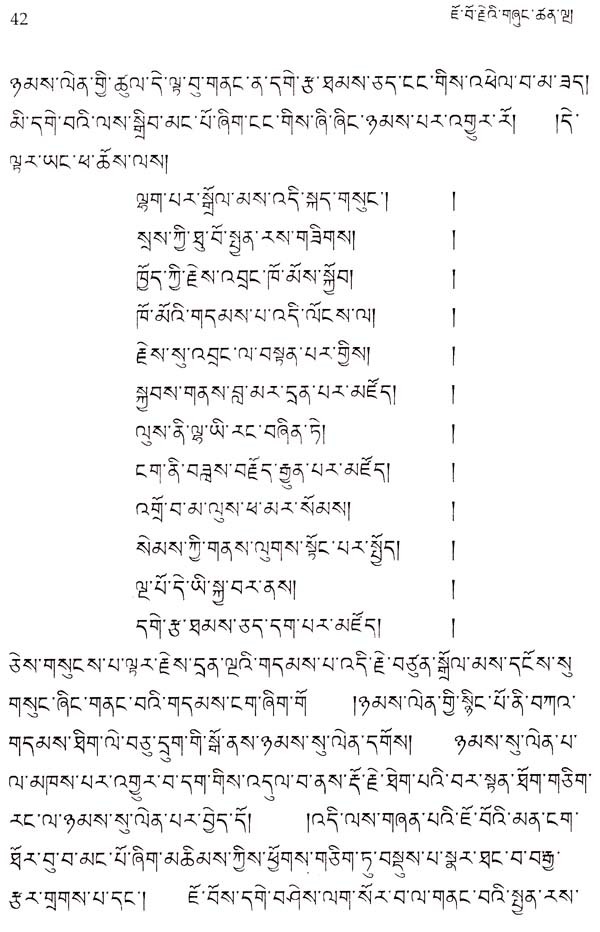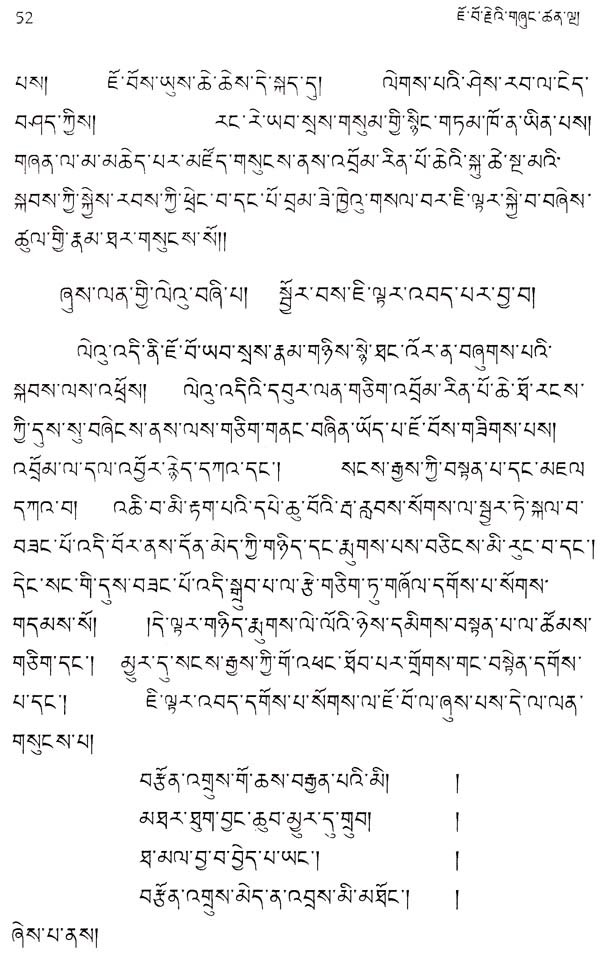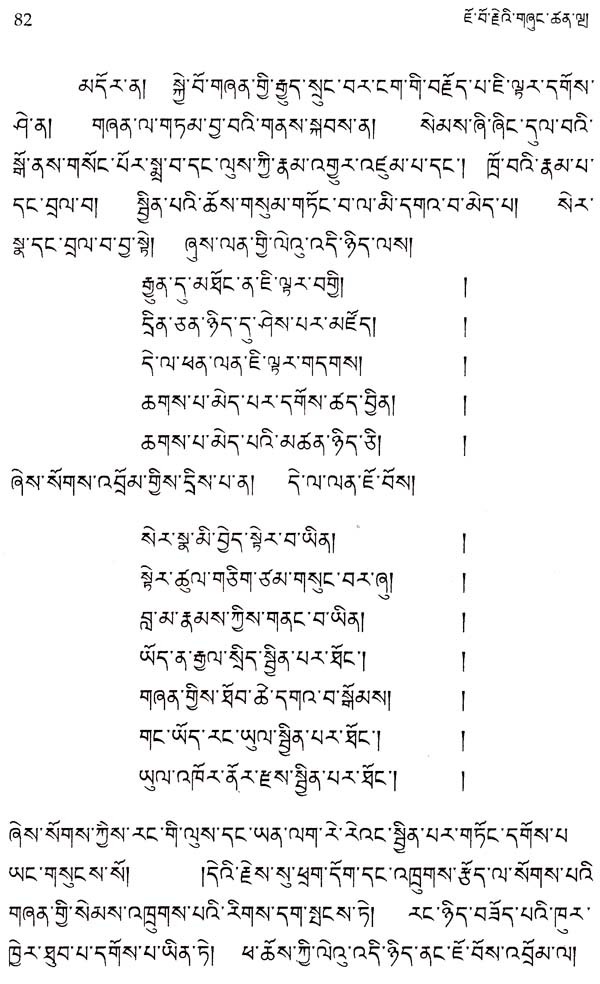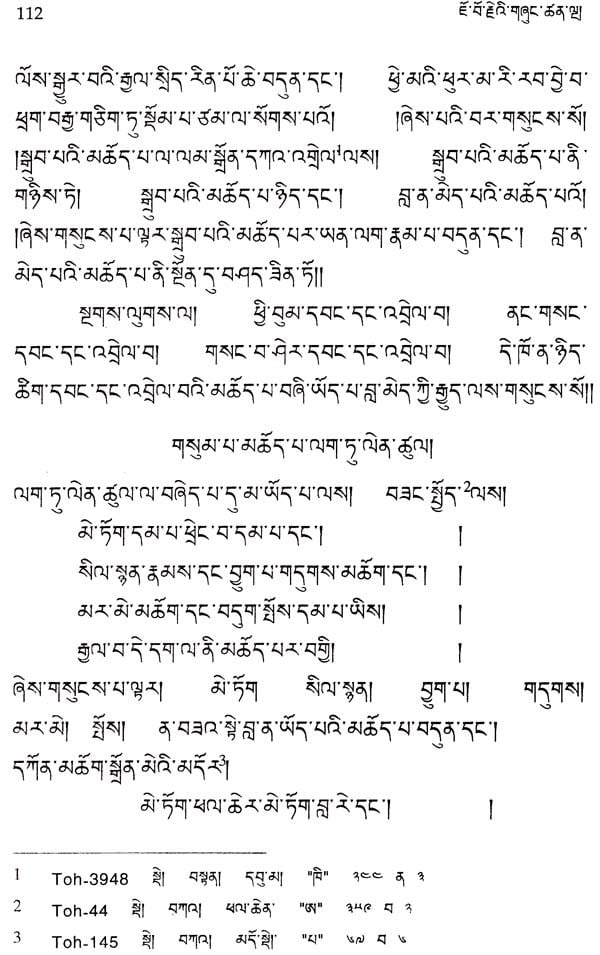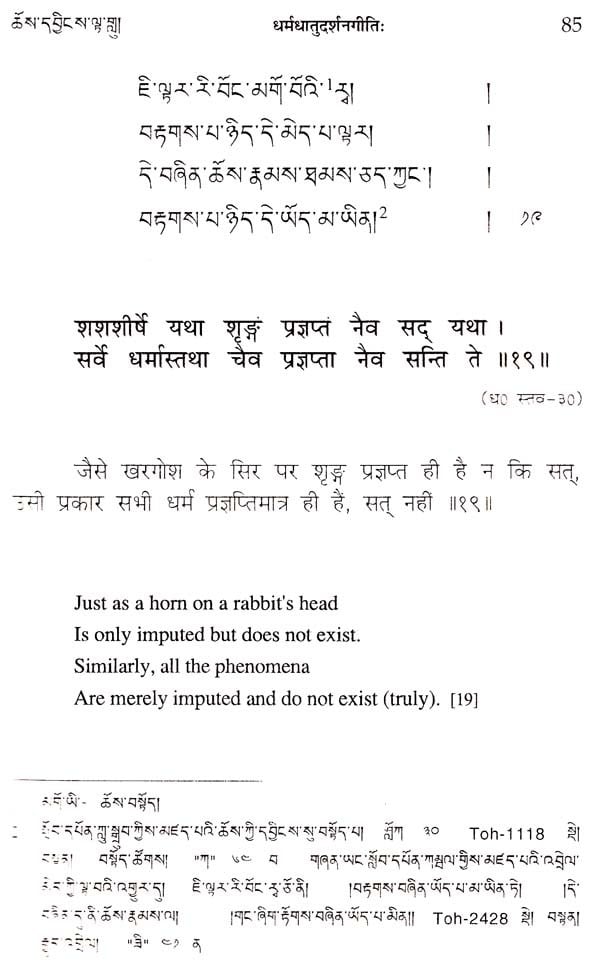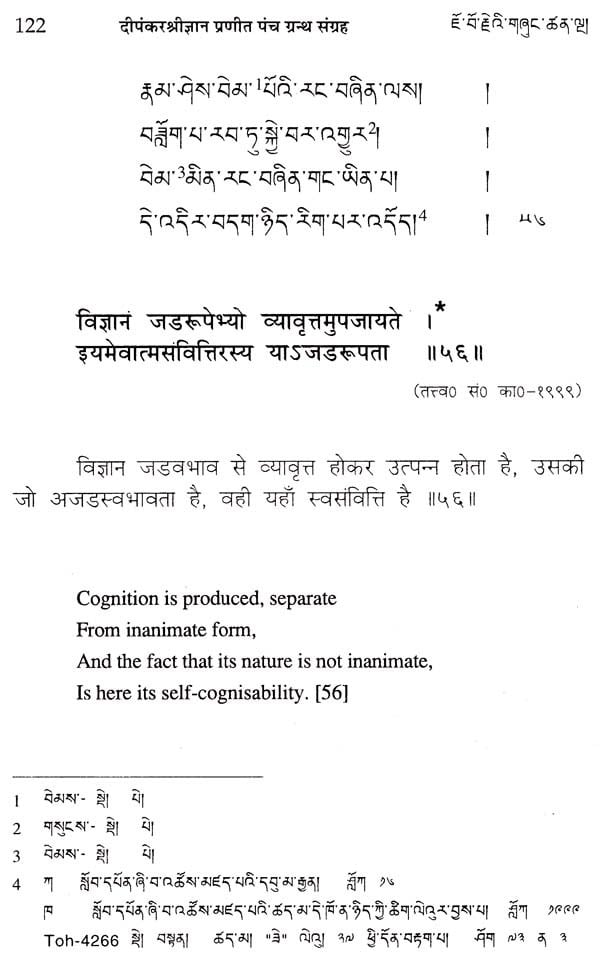
आचार्य दीपंकर श्रीज्ञान प्रणीत पञ्च ग्रन्थ संग्रह: Five Treatises of Acarya Dipamkarasrijnana
Book Specification
| Item Code: | AZH889 |
| Author: | Lobsang Dorjee Rabling |
| Publisher: | Central University of Tibetan Studies Sarnath (Varanasi) |
| Language: | HINDI, SANSKRIT, TIBETAN AND ENGLISH |
| Edition: | 1999 |
| Pages: | 420 |
| Cover: | PAPERBACK |
| Other Details | 9.5x6 inch |
| Weight | 1.07 kg |
Book Description
The Buddha had prophesied in the Prajñāpāramitā Sutra that in a future time his teaching would spread from north to north and become well established there. In keeping with this prophecy, in the seventh century the teachings of the Buddha began to spread from India to Tibet during the reign of King Songtsen Gampo. The Tibetan people came to have not only faith in the Buddha's teaching, but began to practice the doctrine in their daily lives, and constructed large numbers of monasteries, temples and stupas; thousands became monks and nuns. The complete teachings of the Buddha from the Mahayana, Tantrayana and Hinayana sutras were translated into the Tibetan language from the original Sanskrit, Pali and other languages. At present the complete Tibetan Catalogue of Kagyur and Tangyur contains more than 5000 texts. Tibetan scholars not only practised the Buddha's teachings, but also wrote many important commentaries on the Buddha's teachings and on works of Indian scholars for the benefit of future generations.
Tibet has thus been a treasure-house of Buddhism and its culture for many centuries. The Tibetan people kept to the fundamental teachings of the Buddha such as not harming any other sentient being, and living in harmony with the natural environment. So completely was everyone devoted to following the Buddha's teachings in their personal lives that they did not pay sufficient attention to certain matters of national policy. Consequently, from 1949 onwards the Communist Chinese were able to invade Tibet in the name of 'liberation' and development. By 1959 they had completely occupied Tibet and have by now destroyed more than 6500 monasteries; thousands of monks and nuns have been killed or forced to flee to other countries.
Fortunately His Holiness the XIV Dalai Lama and many other Tibetan scholars were able to escape from Chinese occupation and take refuge in India. With the help of the Indian Government, and with international support, Tibetan Buddhism and its cultural traditions have now re-established themselves at many places all over the world, and there is now widespread support from many quarters for Tibetan initiatives for freedom and self-rule.
**Contents and Sample Pages**

